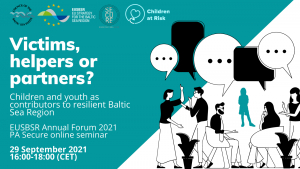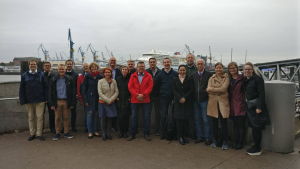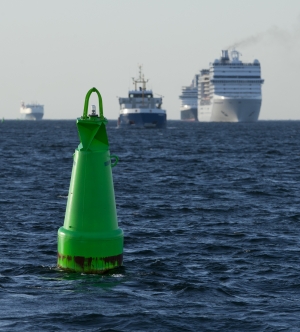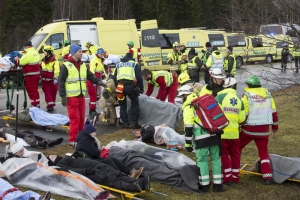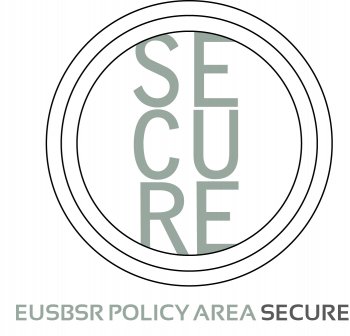Workshop: Victims, helpers or partners? Children and youth as contributors to resilient Baltic Sea Region - PA Secure seminar
Are children too vulnerable to help preparing society’s response to disasters and accidents? Do they have necessary skills to be involved in helping grownups, for example, - in building barriers during floods? Should we listen to their opinions when it comes to safety and security? What do global policies say about these questions? What examples of children and youth’s involvement in resilience building are there?
EUSBSR from the perspective of common security: CASCADE Flagship project
Flagship project CASCADE – Community Safety Action for Supporting Climate Adaptation and Development brings together civil protection specialists and climate change adaptation experts. The flagship status is a recognition for CASCADE’s aims to improve urban resilience in cities and towns in the Baltic Sea Region, as well as the overall macro-regional resilience and CASCADE now operates as a pilot example for cross-sectoral cooperation in the region.
Combating of human trafficking through cooperation
Human trafficking happens every day in the Baltic Sea region. It takes place in all countries – across the borders as well as locally. EUSBSR addresses this issue through Policy Area Secure which focuses on, among other things, cross-border crime.
EUSBSR flagship status - what does it mean for a project?
The actions of the EU Strategy for the Baltic Sea Region are implemented by means of Flagships. Flagships demonstrate the progress of the Strategy, and may serve as pilot examples for desired action in a given field. In May, five new flagships were approved in the National Coordinators' meeting. We contacted the projects and asked what the status means to them.
Involving youth in the EUSBSR: Mission impossible?
Let’s face it. The EUSBSR is hard to communicate. In general terms, yes, but perhaps especially to outsiders such as youth. The strategy is volatile, intangible and hard to measure. Therefore, it is hard to sell. The Baltic Youth Camp 2019 will try the mission impossible: Not only explaining it to youth – but also activating them in the strategy.
EUSBSR Flagship status – what does it mean for a project?
In October 2017, three new Flagships of Policy Area Secure were adopted by the EUSBSR National Coordinators. The actions of the EU Strategy for the Baltic Sea Region are implemented by means of Flagships. Flagships demonstrate the progress of the Strategy, and may serve as pilot examples for desired action in a given field.
We asked the newly approved Flagships what the status means to them.
Spotlight on Policy Area Secure: Civil Protection + Law Enforcement = Safer Baltic Sea Region
|
||||
|
Connect with PA Secure: www.bsr-secure.eu Facebook/Twitter: @BSRSecure |
||||
|
Who we are Since the inclusion of the former Priority Area Crime into the Policy Area Secure in 2015, our team had been striving to act in a holistic societal security paradigm that focuses on risk reduction management related to all threats, regardless whether their origins are natural disasters, man-made disasters or organised crime. We believe that the common efforts of the Baltic Sea Region countries within our Policy Area save lives prevent economic losses and contribute to making the region safer and more prosperous for people to live in. Within PA Secure we organize the activities around two interconnected pillars: civil protection and law enforcement, taking into account that the human dimension of security is as important as the establishment of efficient institutional mechanisms to tackle emergencies.
|
||||
|
What we do As coordinators, we believe in connecting people, networks and organisations facing common challenges. Common challenges became joint opportunities if we face them together. We strive for building long-lasting professional relationships and creating a common security culture in the region. Our working days are filled with a lot of contacts with professionals: we are calling people, mailing people, providing them with a platform for a dialogue. It is already an achievement to have a group of civil protection or law enforcement experts from all the countries in the region to sit around one table. But in order to achieve what they set out to do they might need extra resources, be it carrying out academic research or funding. That is where we come in again identifying needs and relevant funding sources for a project, or a university with a particular research programme. We facilitate different initiatives for new projects, our organisations can even participate in some of them as partners. (There are 10 EUSBSR Flagship projects under Policy Area Secure). We also make sure that the lessons learned from the projects, research results and expert opinions are shared as widely as possible and conveyed to the policy makers. |
||||
|
What is new? For more comprehensive list of PA Secure news, events and activities read our newsletter. Below are some highlights from the recent developments in all 4 areas of our action plan:
“From Gaps to Caps” project finalised. The 24 months long flagship project within the EU Strategy for the Baltic Sea Region; From Gaps to Caps – Risk Management Capability Based on Gaps Identification in the Baltic Sea Regions, has just been finalized. The final report is available here. From Gaps to Caps contributed to strengthening the macro-regional capacities for risk assessment and the establishment of efficient crisis management schemes to cope with natural and manmade disasters in the Baltic Sea Region.
Cross-sectorial project - community resilience to climate change. With the financial support from the Swedish Institute, HA Climate and PA Secure have been leading a consortium to develop a project concept to improve the resilience of urban communities, related to climate change risks, threats and challenges. The resulting project (CASCADE: Community Safety Action for Supporting Climate Adaptation and Development, led by the Union of the Baltic Cities (UBC)) will bring together climate change adaptation and civil protection specialists from different countries in BSR to increase risk assessment cooperation between the national and the local levels. The UN Sendai Framework for Disaster Risk Reduction is one of the cornerstones in the upcoming project.
The CBSS Task Force against Trafficking in Human Beings (TF-THB) partnered in a new project called Trafficking along Migration Routes (TRAM): Identification and Integration of Victims of Trafficking among Vulnerable Groups and Unaccompanied Children (2017-2018). It is coordinated by the International Centre for Migration Policy Development (ICMPD) and funded by the Asylum, Migration and Integration Fund of the European Union.
The project Joint Approach to Tackle Organised Cross-border Crime in the Baltic Sea Region (JATOC) will set up a conceptual model for the joint regional analysis and encourage best practices of national Criminal Intelligence Systems between the participating member states law enforcement agencies to define common guidelines for further cooperation to tackle organised crime in the Baltic Sea Region. The project aims to create more synergy between the Baltic Sea Region Border Control Cooperation and the Baltic Sea Task Force on Organised Crime as well as with the EU Policy Cycle on shared activities and actions relating to cross border crime. Where do we want to be? In the near future we plan to:
Contacts: Civil Security team, Council of the Baltic Sea States Secretariat Janusz Gąciarz, Senior Adviser on Civil Security, This email address is being protected from spambots. You need JavaScript enabled to view it. Jacek Paszkowski, Adviser for Policy Area Secure, This email address is being protected from spambots. You need JavaScript enabled to view it. Nina Jernberg, Project Assistant, Civil Security, This email address is being protected from spambots. You need JavaScript enabled to view it. Andriy Martynenko, Project Officer, This email address is being protected from spambots. You need JavaScript enabled to view it. Swedish Civil Contingencies Agency (MSB) Julia Fredriksson, Adviser on EU and International Issues, This email address is being protected from spambots. You need JavaScript enabled to view it. Spotlight blog series introduces the concrete work done by the Policy Areas and Horizontal Actions of the EU Strategy for the Baltic Sea Region. |
EUSBSR Flagship status – what does it mean for a project?
In February 2017, three new Flagship projects were approved by the National Coordinators under Policy Area Safe, Policy Area Secure and Horizontal Action Climate. The actions of the EU Strategy for the Baltic Sea Region are implemented by means of Flagships. Flagships demonstrate the progress of the Strategy, and may serve as pilot examples for desired action in a given field.




